Buying a used car might seem like a smart way to save money-but what you pay at the dealership is just the beginning. Many people walk away with a cheap car and end up surprised by how much it costs to keep it running. The real price isn’t the sticker price. It’s the total cost of ownership-everything you’ll spend from day one until you sell or trade it.
What Is Total Cost of Ownership?
Total cost of ownership (TCO) for a used car includes every dollar you’ll spend after you drive it off the lot. That means the purchase price, insurance, fuel, maintenance, repairs, taxes, registration, and even parking or tolls if they apply. It doesn’t include the money you might get back when you sell it-that’s a separate calculation. But if you’re trying to figure out if a $8,000 sedan is really cheaper than a $15,000 model, you need to look at the full picture.
According to AAA’s 2024 Your Driving Costs study, the average annual cost to own and operate a vehicle in the U.S. is $12,182. That’s over $1,000 a month. For used cars, the number varies based on age, make, and condition, but the pattern is clear: older cars often cost more to maintain, and cheaper models aren’t always cheaper to own.
Step 1: Start with the Purchase Price
This is the easiest number to find. But don’t just take the asking price. Add in fees: title transfer, documentation, dealer fees, and state sales tax. In North Carolina, for example, sales tax is 3% on used cars. In California, it’s 7.25% plus local taxes. That $9,500 car could easily become $10,200 once fees are added. Always ask for a line-item breakdown of the final price. If the seller won’t give it, walk away.
Step 2: Estimate Insurance Costs
Insurance isn’t optional, and it can vary wildly. A 2015 Honda Civic might cost $900 a year to insure. A 2014 Ford Mustang GT? More like $1,800. Why? Because insurers look at repair costs, theft rates, and accident history. To get accurate numbers, get quotes from at least three providers before you buy. Use the exact VIN, year, make, model, and trim. Don’t guess. One person in Asheville paid $1,400 a year for a used Subaru Outback because it’s a popular target for theft in mountain towns. The same car in Raleigh might cost $800.
Step 3: Calculate Fuel Expenses
Check the EPA’s fuel economy ratings for the model you’re considering. But don’t rely on the highway number. Most people drive mostly in town. Use the city rating and adjust for your driving habits. If you drive 12,000 miles a year and the car gets 22 mpg, you’ll use about 545 gallons. At $3.40 per gallon (the national average in 2025), that’s $1,853 a year in gas. A car that gets 30 mpg? Only $1,360. That’s $493 saved annually-almost $2,500 over five years.
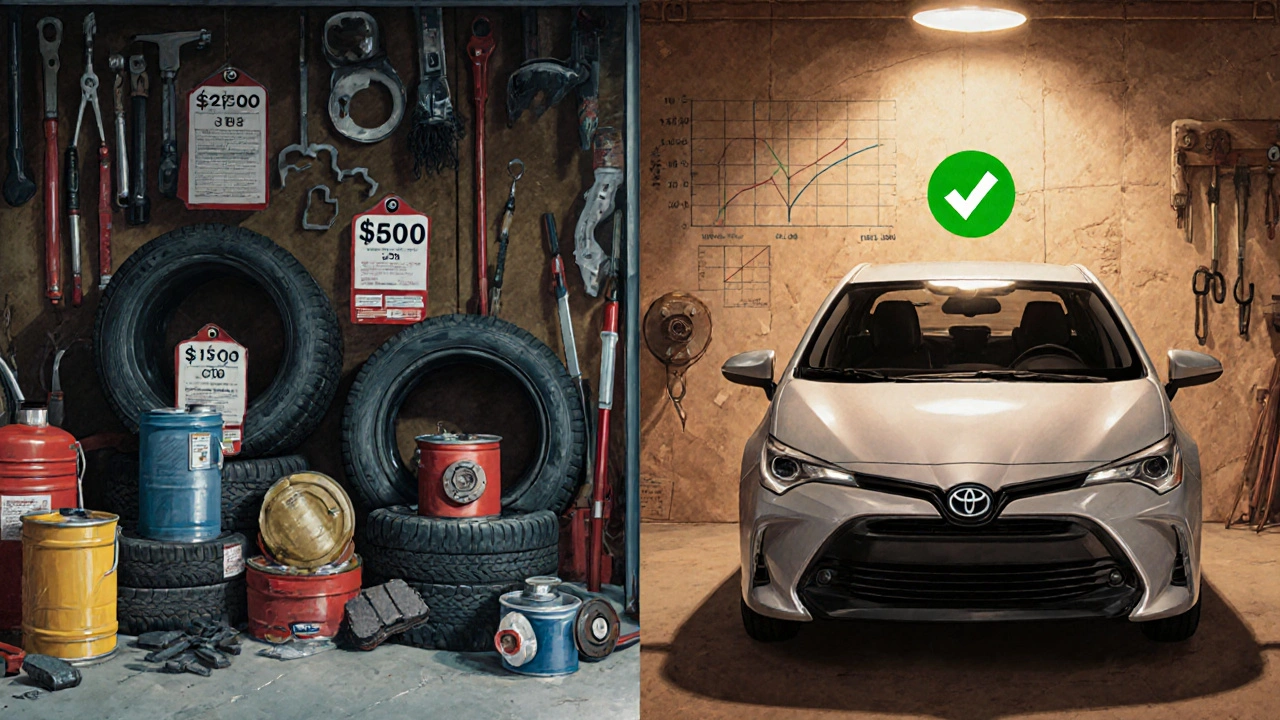
Step 4: Plan for Maintenance and Repairs
This is where most used car buyers get burned. A car with 80,000 miles isn’t automatically low-mileage. It’s a car with 80,000 miles of wear. Here’s a simple rule: budget $0.08 per mile driven for routine maintenance and unexpected repairs. For 12,000 miles a year, that’s $960. For 15,000 miles? $1,200. That’s not a guess-it’s an industry average from Consumer Reports’ annual reliability data.
Some models are known for cheap repairs. Toyota Corollas, Honda Civics, and Mazda3s rarely cost more than $300 to fix. Others? A 2013 Chrysler 200 might need a transmission rebuild at 90,000 miles. That’s $2,500 out of pocket. If you’re looking at a car with high mileage, ask for service records. If there are none, assume the worst and add $500 to your annual repair budget.
Step 5: Factor in Registration, Taxes, and Fees
Every state charges something. In North Carolina, you pay $38.50 for a registration renewal every year. In Texas, it’s $50.75. Some states charge based on vehicle value-so a $10,000 car might cost more to register than a $5,000 one. Also, some places have emissions tests. In Asheville, you need a yearly emissions check for cars 2000 and newer. That’s $30 every 12 months. Don’t forget: if you buy from a private seller, you’ll pay sales tax upfront. If you buy from a dealer, it’s included. Either way, it’s part of the cost.
Step 6: Consider Depreciation and Resale Value
Even used cars lose value. A car that cost $12,000 three years ago might be worth $7,000 today. If you plan to keep it five years, you’ll lose another $2,000 to $3,000. That’s not cash you spend-it’s money you don’t get back. So when comparing two cars, calculate how much equity you’ll lose over the time you own it. A car with strong resale value (like a Toyota or Honda) will cost you less in depreciation than a car that drops fast (like a Chrysler or Fiat).
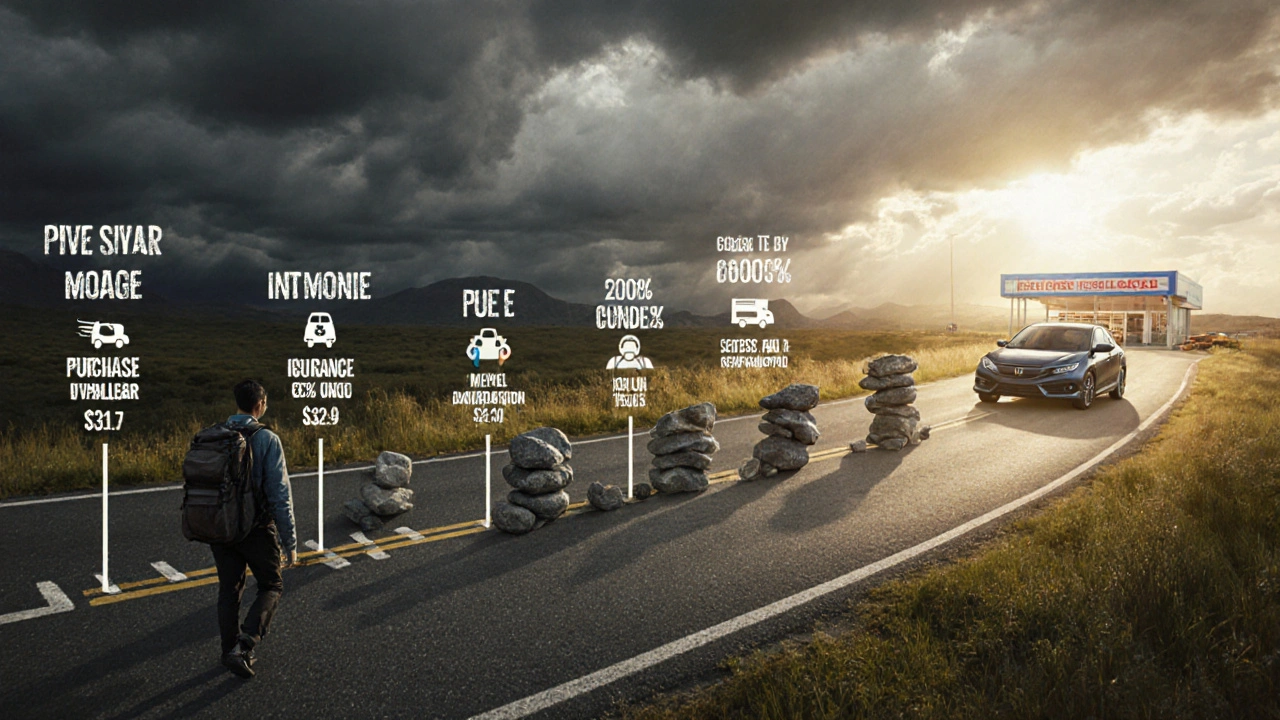
Step 7: Add the Hidden Costs
These are the things no one talks about until they happen:
- Wiper blades ($20 every 6 months)
- Tires ($800 every 40,000 miles)
- Brake pads ($250 every 30,000 miles)
- Oil changes ($50 every 5,000 miles)
- Car washes and detailing ($10/month)
- Emergency roadside assistance ($100/year if you don’t have it bundled)
These add up. If you do all of them yourself, you’ll spend about $600 a year. If you pay for everything professionally? $1,200. Don’t ignore these. They’re not optional.
Putting It All Together: A Real Example
Let’s say you’re choosing between two cars:
- Car A: 2016 Honda Civic, 78,000 miles, $9,200
- Car B: 2014 Ford Focus, 95,000 miles, $6,800
Here’s what you’d pay over five years, assuming 12,000 miles per year:
| Cost Category | 2016 Honda Civic | 2014 Ford Focus |
|---|---|---|
| Purchase Price + Fees | $9,800 | $7,400 |
| Insurance (avg. $950/yr) | $4,750 | $5,200 |
| Fuel (22 mpg @ $3.40) | $8,800 | $10,200 |
| Maintenance & Repairs ($0.08/mile) | $4,800 | $6,000 |
| Registration & Fees ($120/yr) | $600 | $600 |
| Depreciation (Est. $3,500 loss) | $3,500 | $4,800 |
| Hidden Costs (oil, tires, etc.) | $3,000 | $3,500 |
| Total (5 years) | $35,250 | $37,700 |
Even though the Ford was $2,400 cheaper upfront, it costs $2,450 more over five years. The Honda’s better fuel economy, lower repair rates, and stronger resale value make it the smarter buy.
Pro Tips to Lower Your TCO
- Buy a car with a known reliability record. Use Consumer Reports or J.D. Power data.
- Get a pre-purchase inspection from a mechanic you trust-not the seller’s shop.
- Choose a model with low parts costs. Toyota, Honda, and Hyundai dominate this list.
- Pay cash if you can. Financing adds interest, which increases your TCO.
- Drive less. Every mile adds cost. Walk, bike, or carpool when you can.
- Do your own basic maintenance. Changing oil, air filters, and wipers saves hundreds a year.
What to Avoid
Don’t fall for these traps:
- “It’s only $5,000!”-If it needs a new timing belt, that’s $1,200 right away.
- “I got a great deal.”-If the seller won’t let you inspect it, it’s a red flag.
- “I’ll fix it later.”-If the suspension is worn, you’re damaging the tires and steering components.
- “I’ll sell it in two years.”-Cars with high mileage or poor reputations are hard to resell.
The cheapest car isn’t the one with the lowest price tag. It’s the one that costs you the least over time.
Is it worth buying a used car with over 100,000 miles?
Yes-if it’s been well-maintained and is a reliable model. Cars like the Toyota Corolla, Honda Civic, and Subaru Outback regularly reach 200,000+ miles with routine service. Check service records. If oil changes and major repairs were done on time, high mileage isn’t a dealbreaker. But avoid models known for early failures, like certain Ford Focus transmissions or Chrysler 200 engines.
How much should I budget monthly for a used car?
Aim for no more than 15% of your take-home pay. For example, if you earn $4,000 a month after taxes, your total car costs (payment, insurance, gas, maintenance) should be under $600. If you’re paying cash, divide your total five-year TCO by 60 months. If the total is $30,000, that’s $500/month. That’s still a responsible number if your income supports it.
Do electric used cars have lower total cost of ownership?
Generally, yes. A used Nissan Leaf or Chevrolet Bolt has lower fuel costs (electricity vs. gas) and fewer moving parts, meaning fewer repairs. But battery degradation is a risk after 8-10 years. If the battery warranty has expired and the range is below 70 miles, you could face a $5,000-$8,000 replacement. Factor that in. For most drivers, a used EV with under 60,000 miles and a known battery health report can save $3,000-$5,000 over five years compared to a gas car.
Should I get an extended warranty on a used car?
Only if the car is expensive to repair and you can’t afford a surprise bill. For a reliable car like a Toyota or Honda, extended warranties rarely pay off. But for a used luxury car like a BMW or Mercedes, where repairs can cost $1,000+ per visit, a warranty might be worth it. Read the fine print: many exclude wear items like brakes, tires, and suspension. Also, avoid third-party warranties unless they’re backed by a major insurer.
How do I know if a used car’s price is fair?
Use Kelley Blue Book (KBB) or Edmunds’ Used Car Value tool. Enter the exact VIN, mileage, condition, and location. Compare at least five listings in your region. If a car is priced 15% below average, dig deeper. It might have hidden damage, flood history, or mechanical issues. Always run a Carfax or AutoCheck report-$40 is cheaper than a $3,000 repair surprise.
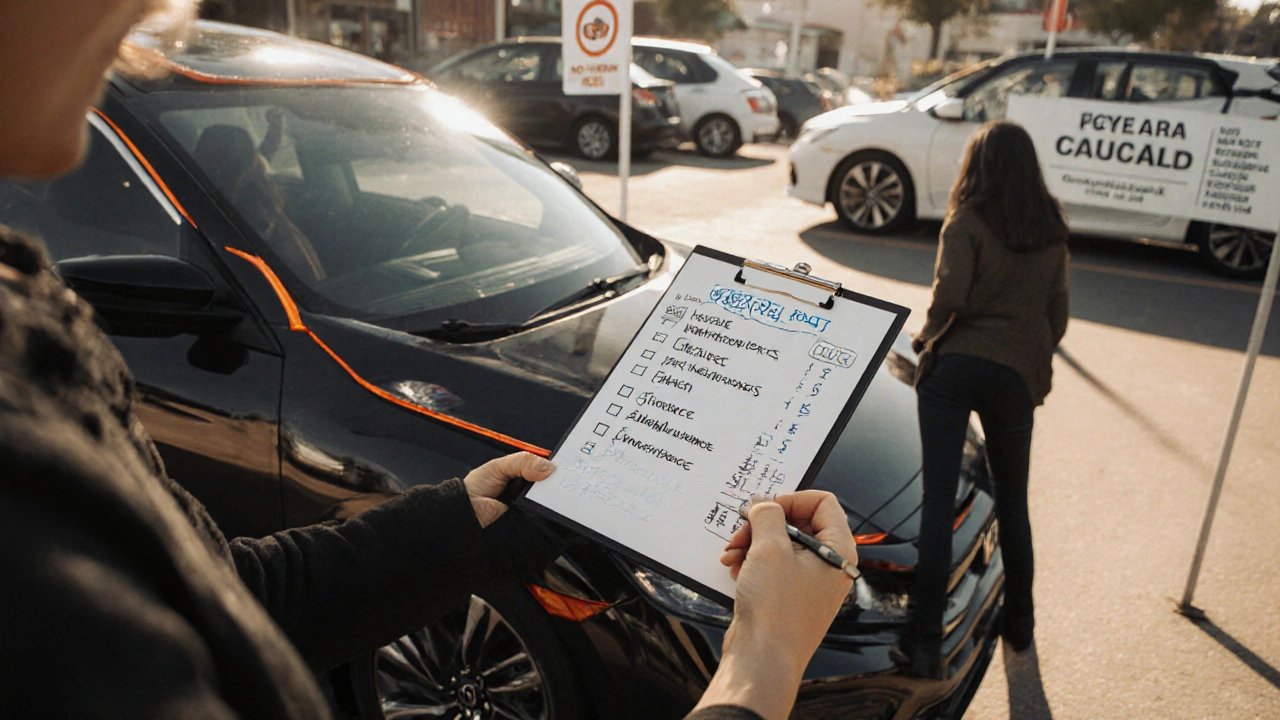
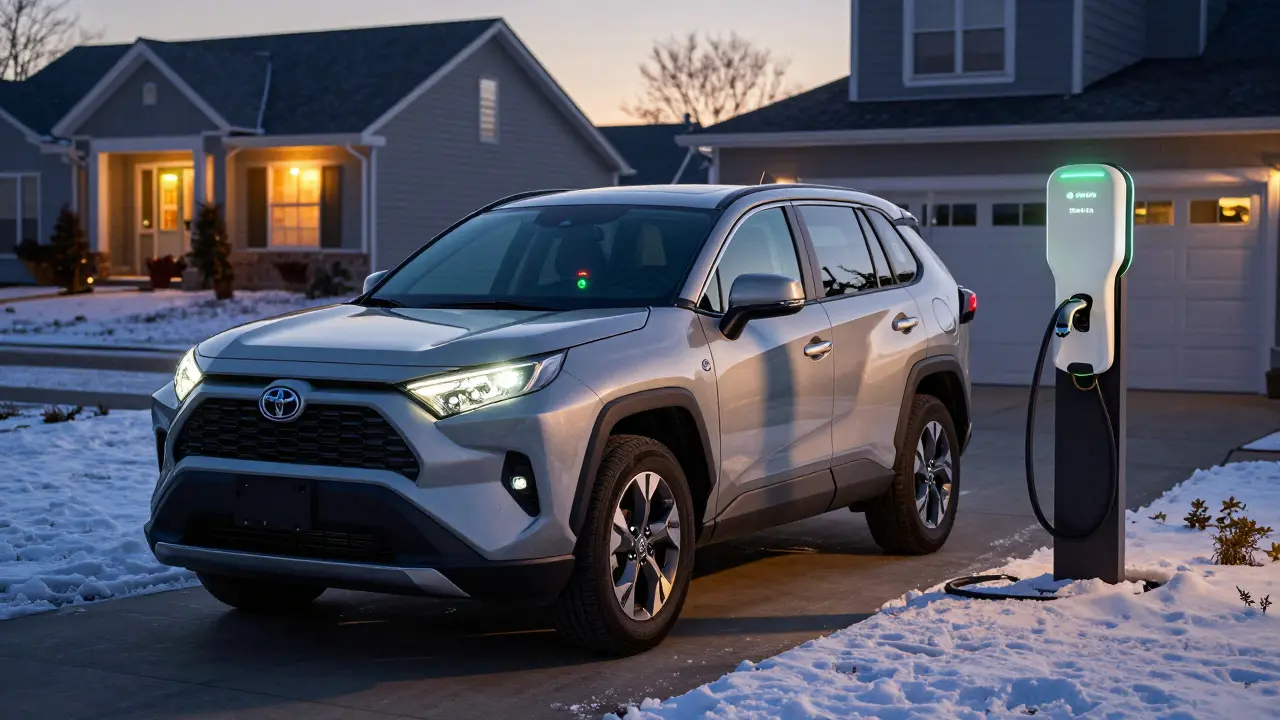
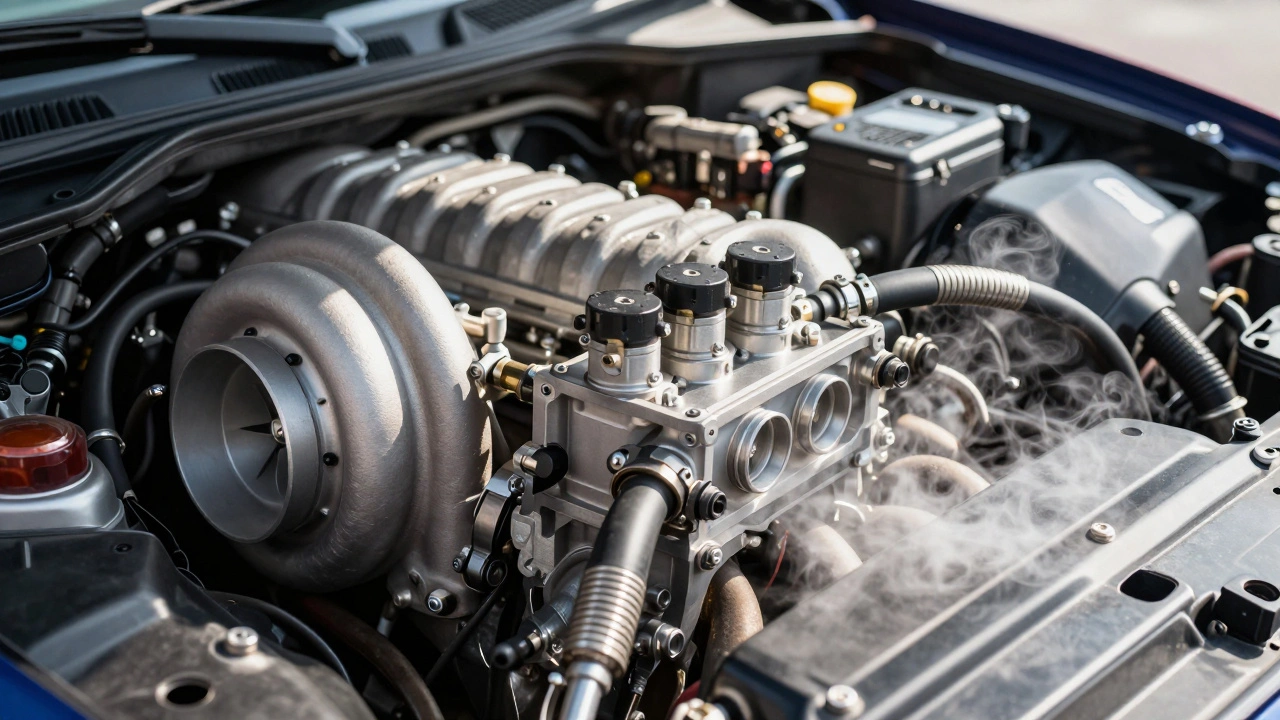
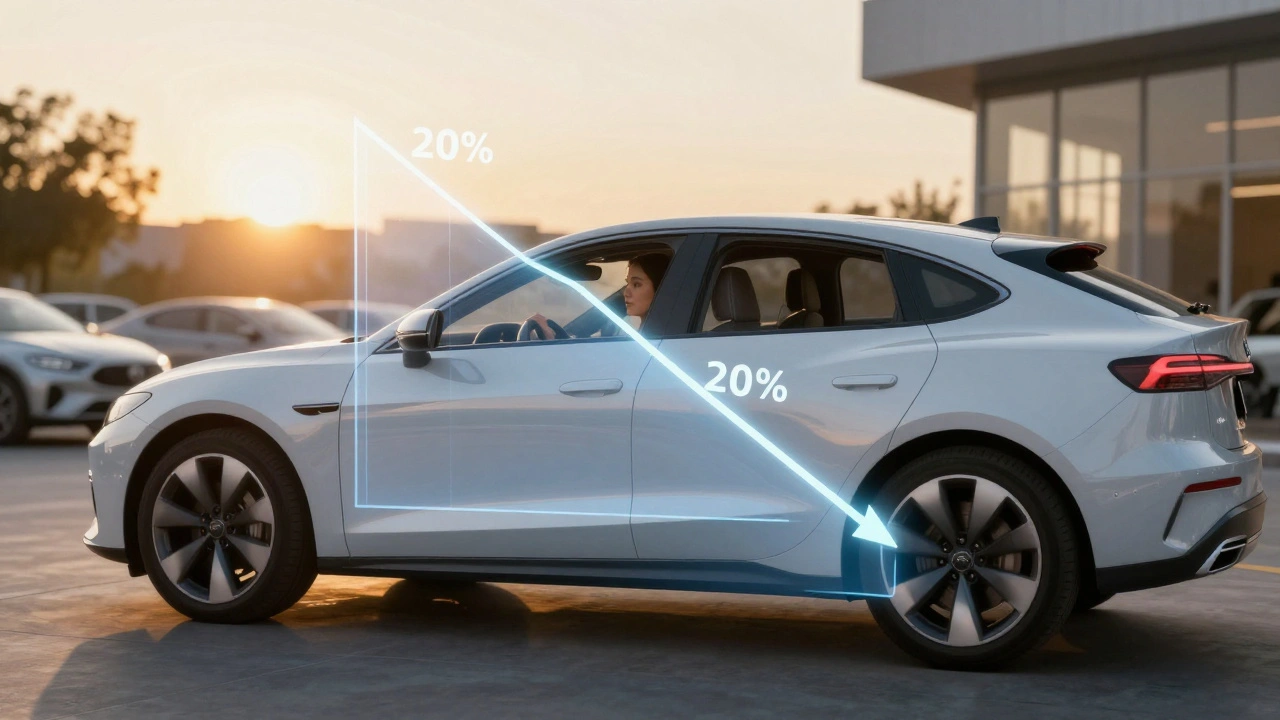


Krzysztof Lasocki
November 11, 2025 AT 11:38Man, I thought I was smart buying my 2015 Civic for $7k until I got the first bill for new tires and a radiator leak. This post is spot on-turns out ‘cheap’ just means ‘cheap upfront.’ Now I budget $100 a month just for ‘oh crap’ repairs. Learned the hard way.
Henry Kelley
November 12, 2025 AT 17:02bro i just bought a 2013 ford focus for 5k and now i regret everything. the insurance alone is like 150 a month and the gas mileage is trash. i thought i was getting a deal but turns out i just bought a money pit with wheels. why did i listen to my cousin?
Victoria Kingsbury
November 13, 2025 AT 22:38Interesting breakdown, but you’re underestimating the hidden costs of emissions testing and regional disparities. In California, the smog check alone can run $80 if your OBD-II system fails, and that’s before you factor in the mandatory $120 ‘vehicle license fee’ based on depreciated value. Also, tire replacement intervals are often misstated-many modern tires last closer to 50k miles if you rotate them religiously. Just saying.
Tonya Trottman
November 15, 2025 AT 14:03Wow. Someone actually did the math. I’m shocked. Most people think ‘used car’ means ‘free money’ until their transmission dies and they’re crying into their ramen. Also, you forgot to mention that ‘$3.40/gallon’ is a fantasy-where I live it’s $5.20 and rising. And let’s not pretend wiper blades are $20. Mine cost $42 because they’re ‘aero’ blades. Welcome to capitalism, folks.
Rocky Wyatt
November 16, 2025 AT 20:28You people are delusional. You think a Honda Civic is ‘reliable’? My cousin’s 2016 Civic had a faulty fuel pump at 42k miles. That’s $900 right there. And don’t get me started on the ‘Toyota myth.’ They’re overpriced, overhyped, and the dealerships screw you on service. Buy a Ford. At least they admit their cars are junk-then charge you $200 to fix it.
Santhosh Santhosh
November 18, 2025 AT 16:07I come from a small village in India where people buy used cars and drive them for 15 years without ever replacing the engine. Here, we don’t calculate TCO-we calculate survival. A car is not a financial product, it is a necessity. If it runs, you fix it with duct tape and hope. In the U.S., you have insurance, warranties, diagnostics, and five different types of oil. I admire your precision, but I wonder: is this level of calculation making you happier, or just more anxious?
Veera Mavalwala
November 19, 2025 AT 12:48Oh honey, you think $37k is a lot? Try living in a city where parking costs $400 a month, your car gets towed twice because you parked ‘too close to the curb’ (which, by the way, is a myth), and your insurance company raises your rates because your ZIP code is ‘high-risk’-even though you drive less than 5k miles a year. This whole TCO thing is just corporate gaslighting. The real cost? Your soul. You’re paying for the illusion of control.
Ray Htoo
November 20, 2025 AT 12:28Just wanted to add something-don’t forget about the cost of time. Taking your car to the mechanic, waiting for parts, dealing with insurance claims, researching recalls… that’s hours you can’t get back. I used to think ‘I’ll DIY everything’ until I spent three weekends trying to replace a brake sensor and ended up paying a shop $200 to fix what I broke. Time is money, folks. And it’s way more valuable than gas.
Natasha Madison
November 22, 2025 AT 02:04Who funded this article? The auto industry? The oil companies? The dealership lobby? You’re all being manipulated. Electric cars are a scam. The batteries are made by Chinese slave labor. Your ‘reliability’ stats are rigged. And that ‘$0.08 per mile’? That’s just a number they made up so you keep buying new tires every 30k miles. Wake up. The system wants you to think you’re saving money-but you’re just a cog.
Sheila Alston
November 23, 2025 AT 08:08I just want to say how proud I am of you for taking responsibility and thinking ahead. So many people just wing it and then blame the world when their car breaks down. You’re setting an example. Maybe if more people did this, we wouldn’t have so many broken-down vehicles clogging up the roads. Keep being thoughtful. The world needs more people like you.
sampa Karjee
November 24, 2025 AT 13:32How quaint. You Americans calculate everything down to the cent. In my country, we don’t have ‘TCO’-we have ‘survival.’ You treat cars like financial instruments. We treat them like livestock. You spend hours comparing insurance quotes. We pray to the engine gods. Your ‘Honda Civic’ is a luxury item. In Delhi, a 1998 Maruti 800 with a broken AC and no seatbelts is the pinnacle of mobility. You call this ‘smart.’ We call it poverty. And yet-you still drive. How tragic.